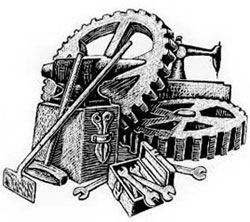Children and the Great Depression
A recent New York Times article profiled a handful of notable African-American men and women who had grown up on a particular Harlem block, Edgecombe Avenue at 155th Street in the area of the neighborhood once known as “Sugar Hill.†During the 1920s and 1930s, the logic of racial segregation insured that black luminaries (such as Duke Ellington, W.E.B. DuBois, Lena Horne, Aaron Douglas) occupied the same blocks as working- and middle-class families, and this article details the impact that such an environment had on some of the community’s young people. One of them was musician Roy Eaton, who became a child piano prodigy despite suffering a finger accident as a toddler. It was how he injured his finger that caught my attention, though. According to the Times, “He was slipping a piece of paper under the bathroom door, imitating the men evicting his neighbors in 1933, when it suddenly opened and mangled a finger.â€Â Maybe it’s because I have two young children who engage in such pretend play on a daily basis, but this brief detail struck me as a particularly evocative snapshot of how children experienced the Great Depression. It reminded me of how much of human experience eludes historians, and made me wonder about how children today are experiencing and processing the crises afflicting the adults in their worlds.
Last 5 posts by Ellen Noonan
- Five Years - October 11th, 2012
- Patriotic Celebrations - July 4th, 2012


